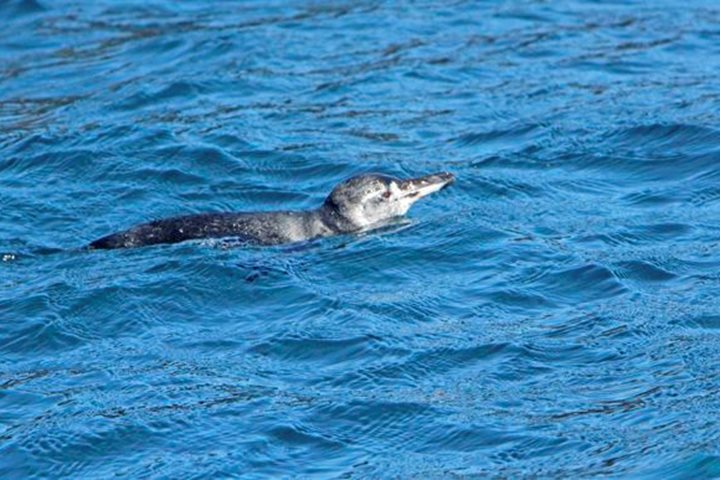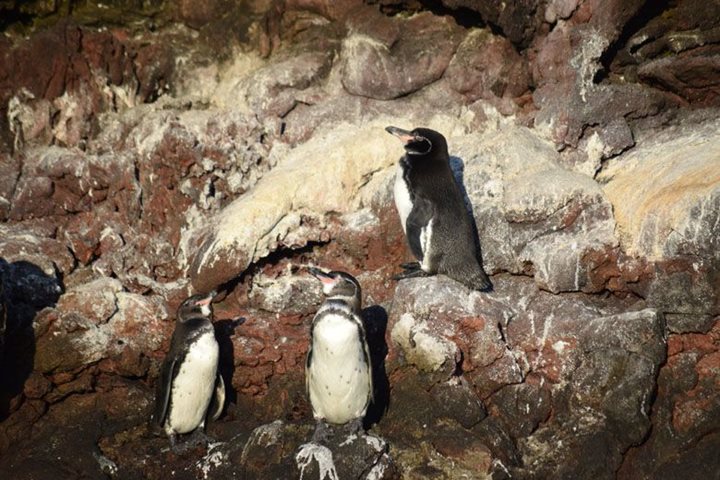Our expedition around the island continues, and today we are going to explore the western side of Galapagos. Being on Isabela Island offers a unique opportunity to encounter ancient creatures. Our first adventure began on a small, black sand beach at Urbina Bay. Several turtle nests could be seen, as evidence of the beginning mating season—we could see depressions on the black sand, meaning that a few turtles were digging here the night before, and then later came back to the ocean.
The dense vegetation, which is dry for more than six months, was blooming a bit and the soil seemed a bit wet, this indicates that some rainfall already hit the western dry fields of Isabela. One Giant creature, which inspired the name to the Galapagos Islands, was hidden under the sea grass, and many land iguanas were basking under the sun to get warm. Urbina Bay is a volcanic uplifted area, with boulder and big corals heads exposed along the shoreline.
This unique experience continued into the dense vegetation, where many types of Darwin finches were found, and also mockingbirds and warblers. The day became hot and sun turned fierce, so we came back to the beach to swim and to enjoy the great scenery.
The afternoon couldn't be better; we offered several options to enjoy the magical wildlife of Galápagos. A close encounter with penguins, cormorants and other shorebirds was the objective for the explorers who went kayaking in the challenging waters of Tagus Cove. Others wanted to enjoy the underwater realm and went snorkeling along the coastline, where they found several species of fish such as harlequin wrasses, balloon fish, Peruvian grunts, dusky chubs and damselfish. Sea turtles and Galápagos penguins were also seen in the snorkeling area.
Late in the afternoon, many of our explorers opted to go for a power walk, while others went for a Zodiac ride. The end of the day closed with the sun setting behind Fernandina Island. It was another great in paradise.







